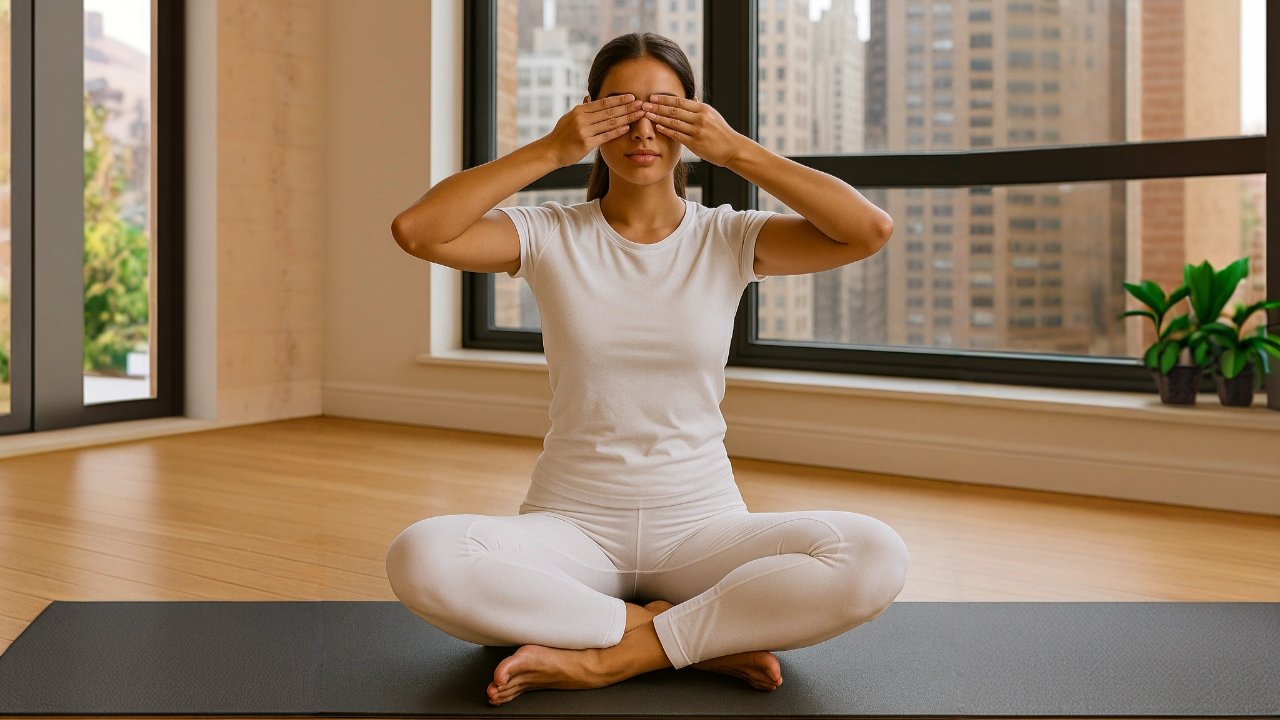Traditionally practiced, Bhramari Yoga—also referred to as Bhramari Pranayama—is a straightforward yet deeply effective breathing technique rooted in yogic wisdom. The name “Bhramari” comes from the Indian black bee, symbolizing the gentle humming sound produced during this exercise. This sonic vibration helps quiet the mind, soothe the nerves, and foster a deep sense of inner peace.
How to Do Bhramari Yoga: A Step-by-Step Approach
Step 1 – Settle into a Comfortable Posture
Sit cross-legged on the floor (such as in Sukhasana) or upright in a chair. Keep your spine erect and shoulders relaxed. Close your eyes softly.Step 2 – Block Out External Stimuli
Gently press the cartilage at the entrance of your ears to block the ear canal, or simply cover the ear canal opening using your thumbs. Let your index and middle fingers rest gently on your eyelids, and place the remaining fingers on your cheeks.Step 3 – Inhale Fully Through the Nose
Take a long, deep breath in, allowing your lungs to expand completely.Step 4 – Exhale with a Gentle Buzz
As you breathe out, make a smooth humming sound with your lips closed, like the murmur of a bee. Allow the vibration to echo in your head.Step 5 – Repeat the Cycle
Begin with 5-minute sessions. Gradually extend your practice as you become more comfortable and relaxed.Video Tutorial for Bhramari Yoga
Key Benefits of Bhramari Yoga
1.Alleviates Stress and Anxiety
The soft humming activates the parasympathetic nervous system, calming the mind and reducing stress hormone levels.2.Enhances Mental Clarity and Focus
This practice sharpens attention and memory—ideal for students, creatives, and professionals alike.3.Supports Restful Sleep
A regular evening practice can soothe the nervous system and improve sleep quality.4.Regulates Blood Pressure
The slow, rhythmic breathing and vibrations naturally help lower blood pressure by improving blood circulation.5.Eases Sinus Congestion and Headache Tension
The sound vibrations help open nasal passages and ease forehead tension, offering relief from sinus pressure and headaches.
Best Time & Duration for Practice
Q1.When Should You Practice—Morning or Night?
Bhramari Yoga can be done either to begin your day with calm or to wind down in the evening. Ideally, practice it on an empty stomach.
Q2.How Long Should You Practice?
Start with 5 minutes daily. As your comfort grows, extend it to 10–15 minutes to gain deeper benefits.
Start with 5 minutes daily. As your comfort grows, extend it to 10–15 minutes to gain deeper benefits.
Precautions to Keep in Mind
- Avoid the practice if you have a serious ear infection.
- Consult a healthcare provider if you have very low blood pressure.
- Choose a quiet, peaceful setting to practice without distractions.
Final Reflection
Bhramari Yoga is a gentle, accessible pranayama suited for practitioners of all levels. Whether you aim to quiet your thoughts, increase your focus, or simply find stillness in your day, the humming bee breath can be a transformative practice. Embrace it as a daily ritual—and tune in to the serenity within.

Comments
Post a Comment